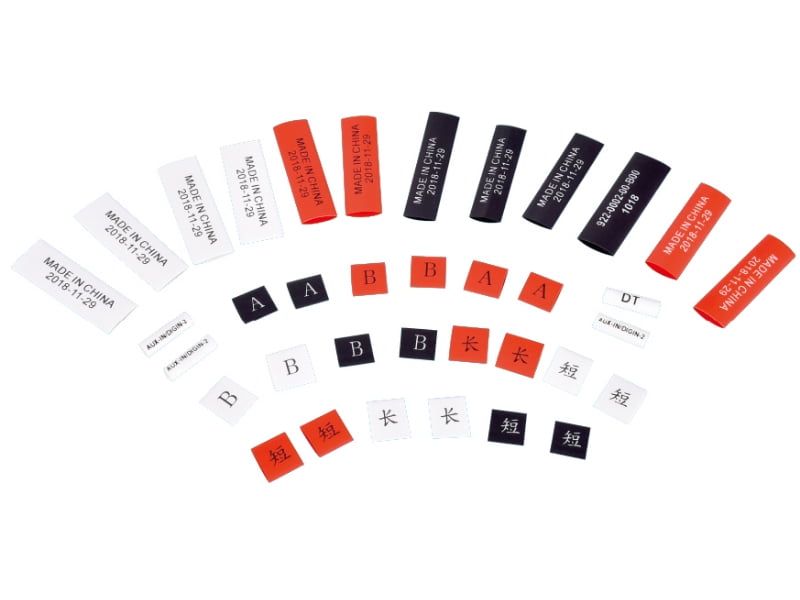What is an Identification Heat Shrinkable Sleeve?
An Identification Heat Shrinkable Sleeve is a specialized polymer tube designed to shrink radially when exposed to heat, conforming tightly to the object it covers. These sleeves are widely used for labeling, insulation, and protection of cables, pipes, and other components. They are typically made from materials like polyolefin, PVC, or fluoropolymers, offering excellent durability and environmental resistance.

Key Characteristics with Technical Data:
Shrink Ratio: Ranges from 2:1 to 4:1 (e.g., a 40mm sleeve can shrink to 10mm diameter with a 4:1 ratio).
Operating Temperature: -55°C to 125°C for standard polyolefin sleeves, with high-temperature variants (e.g., fluoropolymers) enduring up to 200°C.
Tensile Strength: ≥10 MPa (ASTM D638), ensuring mechanical robustness.
Dielectric Strength: ≥15 kV/mm (IEC 60243), providing electrical insulation.
Flame Resistance: UL 224 or IEC 60707 VW-1 compliant, with self-extinguishing properties.
UV Resistance: 1,000+ hours of UV exposure without degradation (ASTM G154).
Chemical Resistance: Resistant to oils, acids, and alkalis (tested per ASTM D543).
Applications of Heat Shrinkable Sleeves
Heat shrinkable sleeves are versatile components used across industries for identification, protection, and insulation. Below are key application scenarios:
Electrical and Telecommunications: Sleeves insulate and label cables, terminals, and splices. They prevent short circuits and moisture ingress (IP68 rating when sealed).
Oil and Gas: Used for pipeline identification and corrosion protection. High-grade sleeves withstand harsh chemicals and temperatures up to 150°C.
Aerospace and Automotive: Protect wiring harnesses from abrasion and fluids. Meet FAA and SAE standards for flame retardancy.
Construction: Label steel rebars and structural components with printed sleeves for traceability.
Medical Devices: Sterilizable sleeves (ETO, gamma-ray compatible) mark and insulate surgical tools.
Renewable Energy: Solar panel junction boxes and wind turbine cables use UV-resistant sleeves.
Maintenance Guidelines
Proper care extends the lifespan and performance of heat shrinkable sleeves:
Storage: Keep sleeves in a cool, dry place (15–25°C) away from direct sunlight. Humidity should be below 60% to prevent premature aging.
Installation: Use a heat gun (80–120°C) or oven for uniform shrinkage. Avoid open flames to prevent scorching. Ensure the substrate is clean and dry.
Inspection: Periodically check for cracks, discoloration, or peeling. Replace sleeves showing signs of degradation (e.g., >10% shrinkage loss).
Cleaning: Wipe with isopropyl alcohol for grease/oil contamination. Avoid abrasive cleaners that damage printed labels.
Replacement: Follow manufacturer’s lifecycle recommendations (typically 10–15 years for outdoor use).
Note: For critical applications (e.g., aerospace), adhere to OEM specifications for sleeve material and installation protocols.
Identification Heat Shrinkable Sleeves combine durability, functionality, and ease of use, making them indispensable in modern engineering. By selecting the appropriate material and adhering to maintenance best practices, users can ensure long-term reliability across diverse environments.




 English
English

